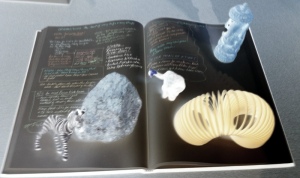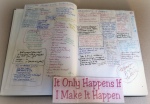 I wrote two poems that were very dear to me, but unfortunately never quite hit their mark with my critique buddies, neither the Poetic Musings nor my in-town group.
I wrote two poems that were very dear to me, but unfortunately never quite hit their mark with my critique buddies, neither the Poetic Musings nor my in-town group.
Almost every poem I shared with my critique groups has been improved by the act of putting it out there, reading it aloud to my local group, and understanding how my marvelously eclectic poetic friends interpreted my words and my intentions.
Each of these poems were different in structure and organization. They were about two friends of mine, very different people, who meant and still mean a great deal to me. I received guidance, comments, reworking suggestions, but no matter what I did, they never came to life. The richness and intensity of emotions, the imagery, and the story remained elusive.
I’m going to give you some background, then share portions of one of these poems, what I was trying to get across when I wrote it. I’d like your input and ideas about how to make it closer to its heart.
The first poem is titled “My Laurel Burch Bag“. It’s the story about how friendship grew out of an incident at a silent auction fundraiser for a shelter for battered women and children. “J” and I bid against each other several times for this marvelous bag, which Laurel had donated to the cause. I won.
Every time we saw each other, we joked about that Laurel Burch bag. That was in the early 1980s, and I still use it to carry anything that will fit. It’s traveled on trains, boats, airplanes, in cars and for 10 years in our motorhome as we traveled all around the US And Canada.
Every time I load my goodies into the bag, I think of “J”. For couple of years, on my infrequent trips to the Bay Area, I met “J” for lunch. She was in the midst of caring for her sister, who was in late stages of breast cancer. I always made it a point to get together with “J” when I came to town.
Our lunches often consisted of a lot of wine, mostly drunk by “J”, since I was driving; we had a couple of favorite locations where we were known and welcomed.
Sometimes we talked about how awful and unfair the situation was, the pain of watching, the feelings of impotence at how little we could do to change anything. Other times we giggled our way through crazy assortments of appetizers and desserts, reminiscing about some of the wacky things we’d done together.
I didn’t realize until several years later just how much my visits and off-the-wall sense of humor helped “J” cope with the reality she went back to face when we were done.
I haven’t been back in almost 4 years, but I intend to contact “J” when we are there later this year. I know we’ll pick back up somewhere along that lengthening thread of friendship that doesn’t unravel even if we haven’t seen each other nor spoken much during this time.
All of this I want to load into my Laurel Burch bag. Perhaps it is too much to try to carry in one poem, no matter how I pack it in, take it all out, reorganize, and repack it. But I keep trying.
Now I would like your help to see if there is a way to make it all fit, to fill my Laurel Burch bag with these memories and love. Here are two working versions.
Thank you.
My Laurel Burch Bag, Ver. 1,
A thought of “J” tangles
me and my Laurel Burch bag,
lavender-and-animals
tote filled with shoes, papers,
dirty underwear,
and Writers Conference memories.
Over twenty years ago
we became friends, “J” and I,
supported the ERA
(which failed)
and a battered women’s shelter,
(which succeeded).
We tried, in our own way
to make a difference.
We did, sometimes,
for a while.
When her sister was dying
I’d take her to lunch,
let her escape,
each time I came to town.
We’d retell stories
unrelated to the day’s sorrow
— like fighting over who’d get
the Laurel Birch bag
at that fundraiser.
I didn’t realize
how important this was
’til she thanked me
a dozen years later
for being there
memories woven strong
with fiber of friendship
in my Laurel Burch bag.
My Laurel Burch Bag, Ver. 2
Alive and aging memories
of friendship stashed
in my Laurel Burch bag
I lug them carelessly,
fill precious space
with shoes, papers,
dirty underwear
Image spins my head
I’m sipping cabernet,
drinking in rich refractions
with each shift of hand
Drift into Don Quixote’s gap
with my friend “J”,
when we believed
it was possible
to make a difference
Laurel Burch bag
reminder of those days
its soul protection for our hearts
respite when we’d meet
and mourn Joan’s sister
not yet dead, but dying




















